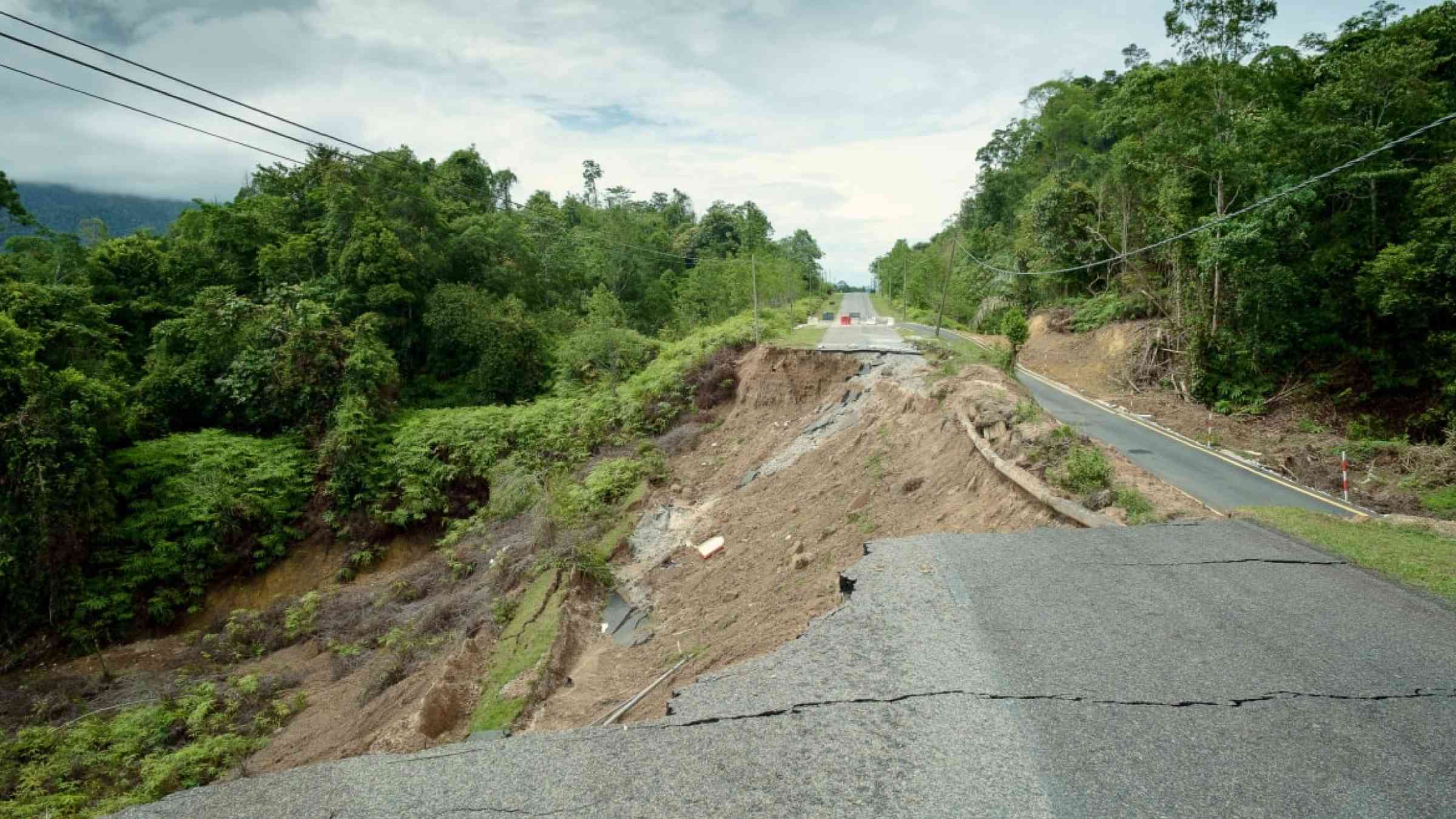Debris flow hazards in urban environments – an example from South Korea

An interesting paper (Lee et al. 2024) has recently been published in the International Journal of Erosion Control Engineering, which considers landslide problems in expanding urban areas. It uses a set of examples from South Korea, which has an increasing number of "sediment disasters" (a catch-all term for landslides and debris flows), caused by a combination of increased numbers of human assets in hazardous locations and increases in the frequency of extreme rainfall events caused by climate change.
One example highlighted by Lee et al. (2024) demonstrates the problem well. The site, which is located at [37.4681, 127.2029], has steep, forested terrain with a small village at the toe of the slope. This Google Earth image of the site is from October 2019:-
Lee et al. (2024) highlight an intense rainfall event that struck this area on 8 to 9 August 2022. A nearby rain gauge recorded 306.5 mm of rainfall in the storm, with a peak intensity of 76 mm in an hour. The most intense rainfall period triggered a debris flow on the slopes above the village. This Google Earth image, from May 2023, shows the aftermath of the debris flow:-
The debris flow initiated as a shallow landslide. When it struck the village at the foot of the slope, 13 houses were buried.
As the images above show, this location was clearly at risk from debris flows even before the recent increases in the frequency of extreme rainfall events. The community is constructed on an alluvial fan that was formed from such events in this catchment. But Lee et al. (2024) highlights the growth of the village at the foot of the slope. In 1981, this village consisted of ten households; by 2020 this had swelled to 30 buildings. Thus, the vulnerability of the community has increased even as the hazard is becoming more elevated. This has led to a marked increase in overall risk.
This combination of both increasing vulnerability and increasing hazard is playing out across the world, creating major challenges for the responsible authorities. It is possible to mitigate the threat at a site like this, using flexible and/or rigid barriers, for example. But this is very expensive, and rigid barriers in particular have major impacts on the environment.
Lee et al. (2024) rightly note that the long term solution must involve both public education about responsible land use and enhanced legal frameworks. But this takes focused political will, which is often lacking.